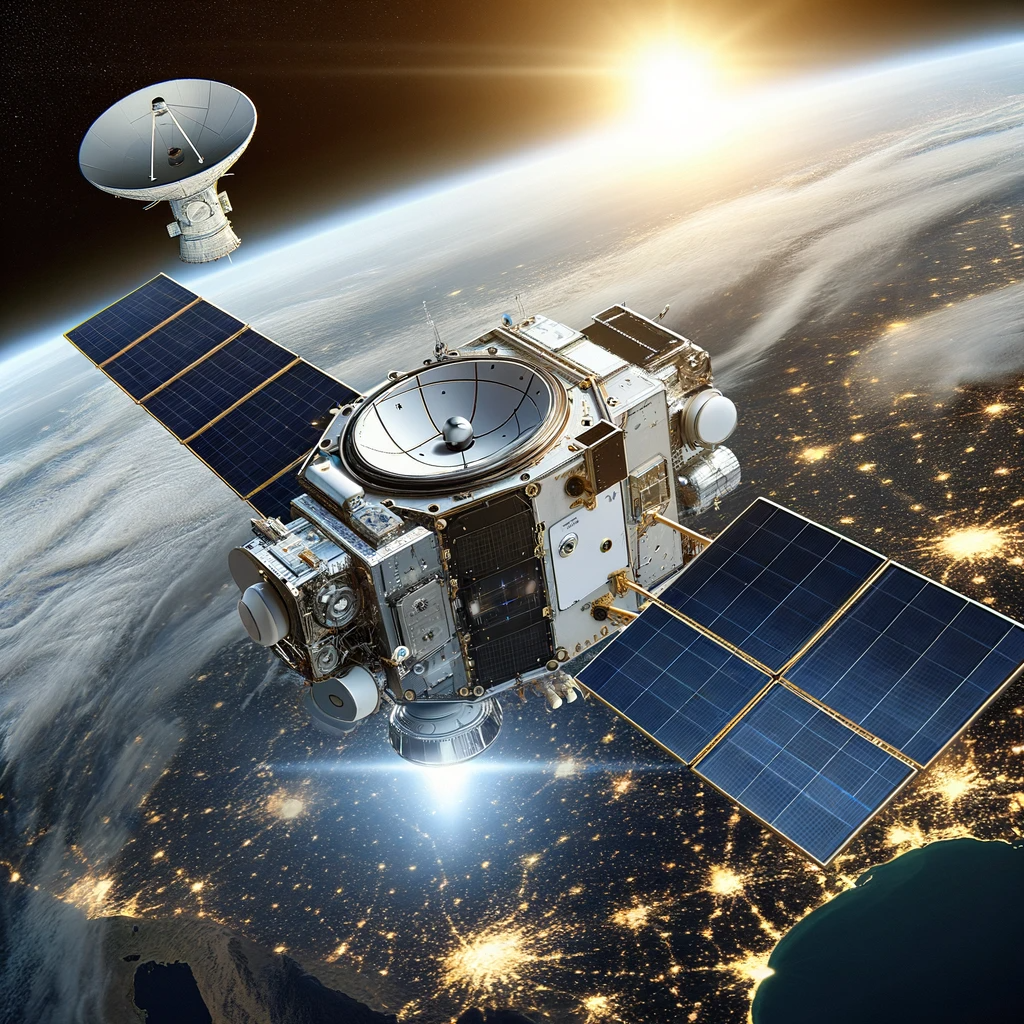Weather forecasting is a critical aspect of our daily lives, influencing everything from what we wear to our agricultural practices and disaster preparedness. While short-term weather predictions have become increasingly reliable thanks to advancements in meteorological science and technology, the accuracy of long-term weather forecasts remains a challenge. However, a new ally has emerged in the quest for improved long-term forecasts: Artificial Intelligence (AI). In this article, we will explore the capabilities and limitations of AI in predicting weather patterns and climate changes over extended periods. We will delve into the groundbreaking research, innovative technologies, and the potential transformation of long-term weather forecasting.
Introduction: The Crucial Role of Long-Term Weather Forecasting
Weather forecasting has become an integral part of our modern lives. It guides our daily decisions, from choosing the right attire for the day to preparing for extreme weather events. While short-term weather predictions (typically up to seven days) have significantly improved over the years, the accuracy of long-term forecasting remains a formidable challenge. Understanding long-term weather patterns and climate changes is essential for several reasons:
- Agriculture: Farmers rely on long-term weather forecasts to make planting and harvesting decisions, manage water resources efficiently, and combat pests and diseases.
- Disaster Preparedness: Governments and organizations need accurate long-term forecasts to prepare for and respond to natural disasters, including hurricanes, droughts, and wildfires.
- Climate Change Mitigation: Long-term climate predictions are crucial for developing strategies to combat the effects of climate change, reduce greenhouse gas emissions, and adapt to a changing world.
- Infrastructure Planning: Engineers and city planners require long-term weather forecasts to design resilient infrastructure that can withstand the challenges posed by changing weather patterns and extreme events.
- Renewable Energy: Energy providers and policymakers depend on long-term weather forecasts to optimize the use of renewable energy sources such as solar and wind power.
In this article, we will explore how AI is poised to transform the accuracy and reliability of long-term weather forecasting, offering new possibilities and addressing some of the limitations of traditional forecasting methods.
The Role of AI in Long-Term Weather Forecasting
Advanced Data Processing
One of AI’s key strengths lies in its ability to process vast amounts of data quickly and efficiently. Weather forecasting relies on data from various sources, including satellites, weather stations, ocean buoys, and remote sensors. AI algorithms can analyze this data more rapidly and accurately than traditional methods, extracting valuable insights that contribute to better long-term forecasts.
Benefits of AI in Data Processing:
- Improved data accuracy and quality: AI algorithms can identify and correct errors or inconsistencies in data, enhancing its reliability.
- Enhanced data assimilation: AI’s data processing capabilities enable meteorologists to assimilate information from a wide range of sources seamlessly.
- Faster data processing: AI can process enormous datasets in real-time, leading to quicker and more up-to-date forecasts.
AI’s proficiency in data processing is invaluable for enhancing long-term weather predictions.
Machine Learning Models
Machine learning (ML), a subset of AI, has gained prominence for its ability to recognize patterns in data. Weather patterns often follow recognizable trends and cycles, making ML models well-suited for weather prediction tasks. These models can learn from historical weather data and continuously improve their forecasting accuracy.
Benefits of AI-Driven Machine Learning Models:
- Increased accuracy in predicting climate trends: ML models excel at identifying subtle changes in weather patterns that impact long-term forecasts.
- Better identification of anomalies and extreme events: AI can recognize unusual weather phenomena, helping meteorologists issue early warnings for extreme weather events.
- Improved understanding of complex atmospheric processes: ML models can unravel the intricacies of atmospheric interactions, contributing to more accurate long-term predictions.
The use of machine learning models is pivotal in deciphering long-term weather patterns and climate changes.

Climate Modeling
AI plays a significant role in developing more sophisticated climate models. These models simulate the Earth’s climate system, helping researchers understand the long-term effects of factors such as greenhouse gas emissions, ocean currents, and solar radiation. AI-driven climate models enable scientists to explore various climate scenarios and their implications.
Benefits of AI in Climate Modeling:
- Enhanced understanding of climate change dynamics: AI-powered models provide insights into the causes and consequences of climate change.
- Better assessment of future climate scenarios: Researchers can use AI to simulate various climate scenarios, aiding in climate science and policy development.
- Informed policymaking for climate mitigation and adaptation: AI-driven climate models provide decision-makers with valuable information to formulate effective strategies for addressing climate change.
AI-driven climate modeling is crucial for making long-term climate predictions and planning for a sustainable future.
Predictive Analytics
Predictive analytics, powered by AI, involves analyzing historical weather data to identify trends and make long-term forecasts. This approach encompasses predicting seasonal weather patterns, droughts, temperature changes over years, and other climate-related phenomena.
Benefits of AI in Predictive Analytics:
- Long-term insights for planning and decision-making: Predictive analytics provide valuable information for agriculture, water resource management, and disaster risk reduction.
- Improved risk assessment and disaster preparedness: AI-driven predictions enable governments and organizations to prepare for and respond to long-term weather-related disasters effectively.
- Greater agricultural productivity: Farmers can benefit from AI-enabled predictions for more sustainable and productive agricultural practices.
Predictive analytics, empowered by AI, are pivotal for long-term weather forecasting.
AI in Practice: Real-World Applications
Deep Learning for Climate Models
Researchers at esteemed institutions such as NASA and the National Center for Atmospheric Research (NCAR) are harnessing the power of deep learning techniques to develop more accurate climate models. Deep learning algorithms are adept at processing and analyzing vast datasets, making them instrumental in understanding complex climate dynamics.
Climate Change Attribution
AI is also being used to attribute extreme weather events, such as hurricanes and heatwaves, to climate change. Understanding the link between climate change and long-term weather patterns is essential for planning and mitigation efforts.
Seasonal Climate Forecasts
Meteorological agencies in various countries utilize AI-driven models to provide seasonal climate forecasts. These forecasts offer valuable information for agriculture, water resource management, and disaster risk reduction, contributing to more resilient and prepared communities.
Challenges and Considerations
While AI holds immense promise for long-term weather forecasting, several challenges and considerations must be addressed to maximize its potential:
- Data Quality: The effectiveness of AI models relies heavily on the quality of input data. Inaccurate or incomplete data can lead to erroneous predictions. Ensuring data accuracy is essential.
- Computational Power: Advanced AI models, particularly deep learning models, demand substantial computational resources. Meeting these requirements can be costly and energy-intensive.
- Model Uncertainty: AI models may produce probabilistic forecasts, introducing uncertainty that needs to be effectively communicated to users and stakeholders.
- Data Privacy: Handling sensitive weather data requires stringent privacy and security measures to protect individuals’ information and ensure data integrity.
- Interdisciplinary Collaboration: Effective long-term weather forecasting often requires collaboration between meteorologists, data scientists, climate researchers, and policymakers. Interdisciplinary cooperation is crucial for success.
The Future of Long-Term Weather Forecasting with AI
The integration of AI into long-term weather forecasting holds the promise of a more accurate, reliable, and actionable forecasting system. As AI technologies continue to advance, the following key developments are expected to shape the future of long-term weather forecasting:
- Enhanced Accuracy: AI will play a pivotal role in improving the accuracy of long-term weather forecasts, benefiting agriculture, disaster management, climate science, and energy planning.
- Better Climate Understanding: AI-driven climate models will provide deeper insights into long-term climate trends and changes, contributing significantly to climate science and informed policymaking.
- Resilience and Adaptation: AI-powered forecasts will enable better preparedness and adaptation to long-term climate changes and extreme weather events, fostering more resilient communities.
- Sustainable Agriculture: Farmers will benefit from AI-enabled predictions, allowing them to adopt more sustainable and productive agricultural practices while mitigating risks associated with climate variability.
- Energy Optimization: Renewable energy sources, such as solar and wind power, will be harnessed more effectively through AI-driven long-term weather forecasts, enhancing energy planning and sustainability.

Conclusion
Artificial Intelligence (AI) has emerged as a transformative force in the realm of long-term weather forecasting. Its ability to process vast datasets, recognize complex patterns, and develop sophisticated climate models offers unprecedented opportunities to enhance the accuracy and reliability of long-term weather predictions. While challenges exist, such as data quality, computational demands, and model uncertainty, the potential benefits for agriculture, disaster preparedness, climate science, and sustainable development are immense.
As AI technologies continue to advance, our ability to predict long-term weather patterns and climate changes will become a critical tool in addressing the challenges of an ever-changing world. With AI as our ally, we can navigate the complexities of the Earth’s climate more effectively, safeguarding our environment and communities for generations to come.
